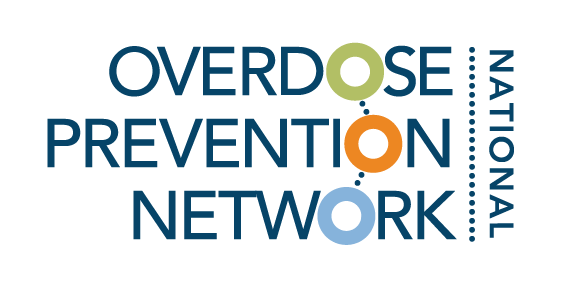
Resource Library
Toolkits, guides, and other resources vetted by experts in overdose prevention.
Filter by category and tags, or search by keyword (ex. COVID-19, harm reduction).
Contingency Management: A Highly Effective Treatment For Substance Use Disorders And The Legal Barriers That Stand In Its Way
This fact sheet makes the case for contingency management as a behavioral treatment option to addressing SUD. It explains some of the legal barriers to implementing contingency management on a wide scale, and why it is important to embrace methods other than medicine in our efforts.
10 Facts About Methamphetamines
This fact sheet answers ten FAQs regarding methamphetamines and their place in the addiction and overdose discussion.
Recovery Month Toolkit 2022
This year, to address the nation’s mental health and overdose crisis, SAMHSA is launching initiatives that increase access to prevention, harm reduction, treatment and recovery services and supports, celebrate the strong and proud recovery community, and applaud the dedication of service providers and community members across the nation who make recovery possible.
Colorado's Opioid Settlement Funds Framework
This website provides detailed information regarding the current status of the Colorado opioid settlement funds, including the participating partners and current funding allocations.
Opioid Settlement Tracker
This website provides detailed information regarding the current status of the various opioid settlement funds by state, as well as other resources for how to look at your local opioid settlement status.
AAFP/AMA Backgrounder: Medication-Assisted Treatment (MAT)
Deaths due to illicit fentanyl and heroin are now leading drivers of the opioid epidemic. This document argues for stronger support from the federal government in providing resources to curb overdose-related deaths, such as MAT.
MAT for Opioid Use Disorder: Overcoming Objections
Despite data showing the success of MAT in treating drug addiction, objections are still common. This document helps clear up some common misconceptions about MAT, and brings evidence-based practice to the discussion around MAT.
Talking to Teens About Fentanyl
This discussion guide is designed to help you talk with the teens around you about fentanyl in a way that empowers them to make safer choices.
What is fentanyl and why is it behind the deadly surge in US drug overdoses?
As fentanyl has become ubiquitous across the U.S., it has transformed the illicit drug market and raised the risk of overdose. This article provides insight into how fentanyl has infiltrated the drug supply in America so quickly, and how we can prevent deaths moving forward.
Drug Fact Sheet: Fentanyl
This fact sheet from the Drug Enforcement Administration provides information about the origin and harmful effects of fentanyl.
Bob’s Story
This is the story of Bob and his experience with overcoming substance use disorder.
Preliminary Monthly Fatal Drug-Related Overdose Counts for April 2021 – March 2022
The CDPH Substance and Addiction Prevention Branch (SAPB) has recently updated its new data resource - Preliminary Monthly Fatal Drug-Related Overdose Counts for April 2021 - March 2022. This preliminary statewide monthly count data is presented by substance and posted on the Overdose Prevention Initiative (OPI) Data webpage. It is intended to provide death data to our partners more quickly. These counts may not represent all overdose-related deaths that occurred during the corresponding period. Subsequent versions of this data resource will also be available on the OPI Data webpage. The CDPH team continues to update the California Overdose Surveillance Dashboard with death data.
ODMap
The California Emergency Medical Services Authority (CEMSA) has implemented ODMap statewide. Since 2020, CEMSA has logged over 145,000 non-fatal overdoses and over 12,000 fatal overdoses into ODMap, which provides a heavy source of data to go off of for future reference. A reminder that this is just one agency logging overdoses and does not reflect the entire state and other agencies who are not part of CEMSA and are continually logging overdoses onto ODMap every day. There is still a push for full statewide ODMap implementation with other agencies, but this is a step in the right direction.
CHRI Point in Time Survey Results
California Harm Reduction Initiative (CHRI), funded by the California Department of Public Health and led by National Harm Reduction Coalition includes a Point In Time (PIT) survey as a part of its evaluation. All 37 syringe services program grantees collect information from participants twice a year, and this highlights a lot of important things about participants experiences with overdose, drug use and access to services.
Tribal Opioid Settlement Webpage
Nationwide settlements have been reached to resolve all opioids litigation brought by states and local political subdivisions against the three largest pharmaceutical distributors. These settlements will provide substantial funds to states and subdivisions for abatement of the opioid epidemic across the country, and will impose transformative changes in the way the settling defendants conduct their business. This web page outlines the various opioid settlements for the tribal communities in the U.S., and offers legal documents outlining the risks and opportunities that these funds present.
DanceSafe
DanceSafe is a nonprofit that provides drug checking and is founded on social justice principles. They are known for testing users drugs at festivals and events and have additional programs ranging from drug education to consent deep-dives to political advocacy to sexual health. You can visit their site to learn more about their efforts or purchase drug testing products via their shop.
BTNX, Inc.
BTNX Inc. is a biotechnology company that specializes in rapid, point-of-care diagnostics. BTNX is the manufacturer of fentanyl testing strips which can be purchased directly from this manufacturer.
Santa Maria Joint Union High School District Naloxone Policy
Santa Barbara Opioid Safety Coalition worked with Santa Maria Joint Union High School District to recently amend a local school policy surrounding medication administration to additionally include naloxone into the policy. This policy allows for the superintendent or designee, or any trained district staff member, to administer naloxone during an opioid overdose. This is an excellent showcase on how COPN coalitions are implementing policy change at the local level.
CA Syringe Services Programs & Harm Reduction
California Department of Public Health has a Harm Reduction and Syringe Access Division, focused on serving people who inject drugs. California law supports public health efforts to expand access to sterile syringes through both syringe exchange programs (SEPs, also known as syringe services programs) and nonprescription syringe sale in pharmacies.

















